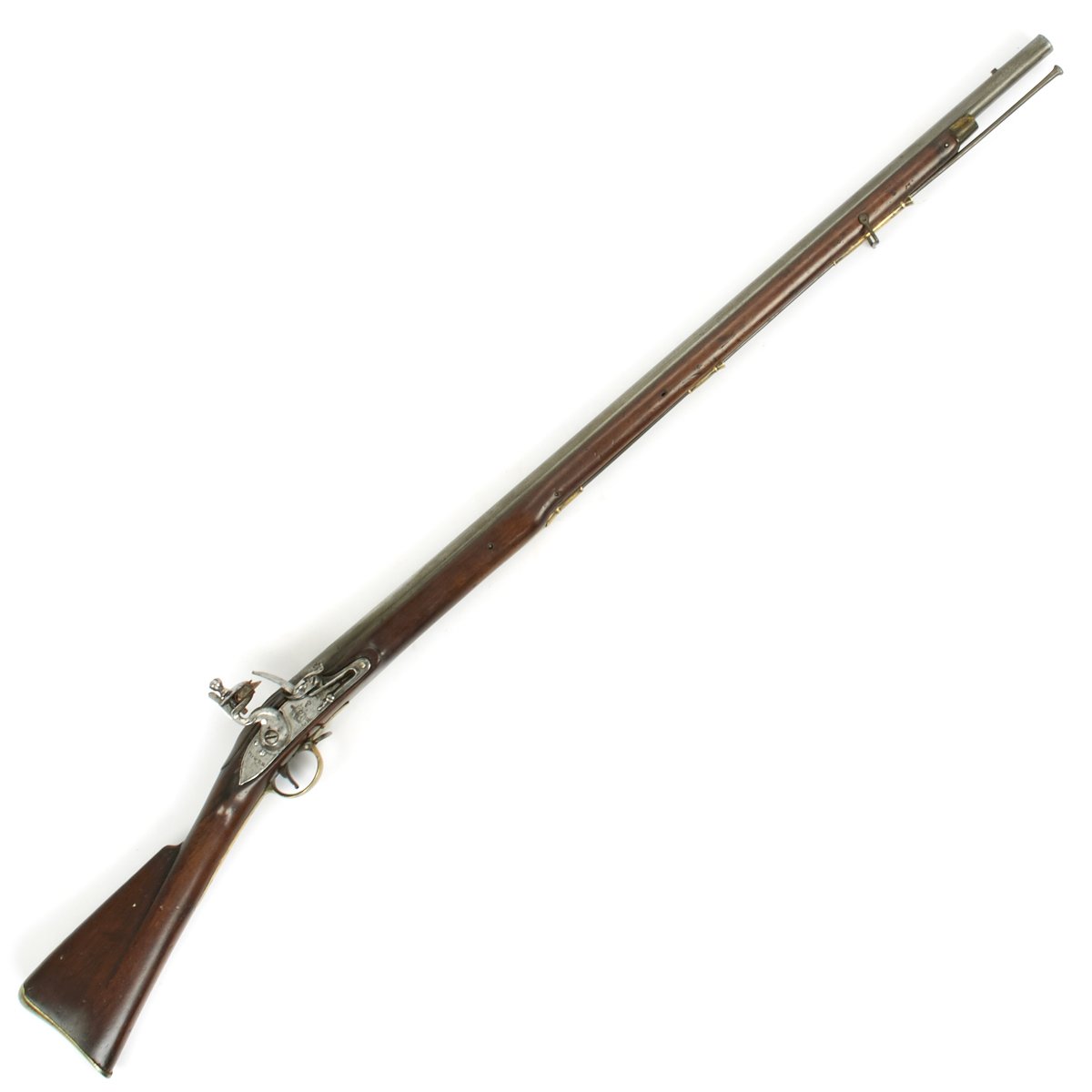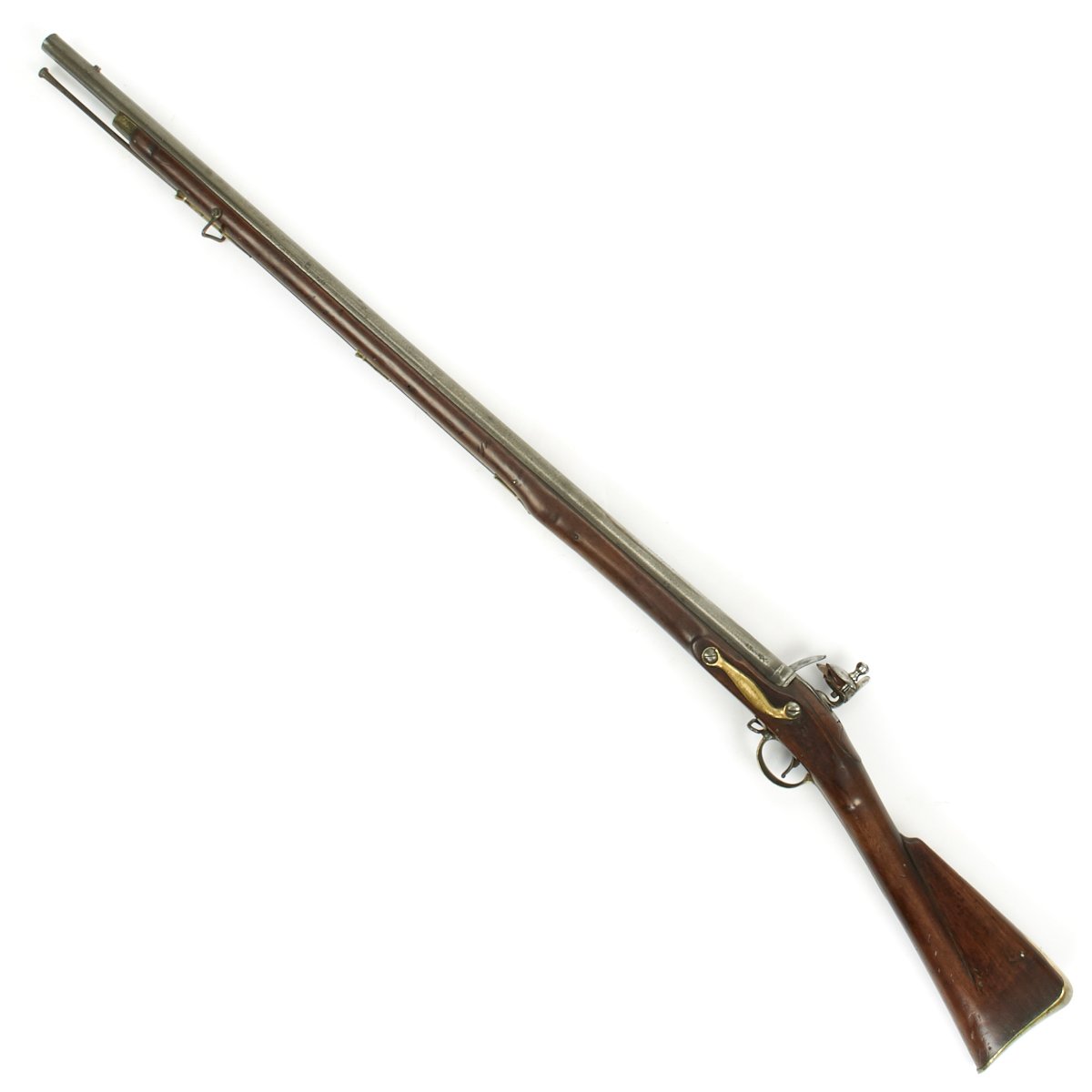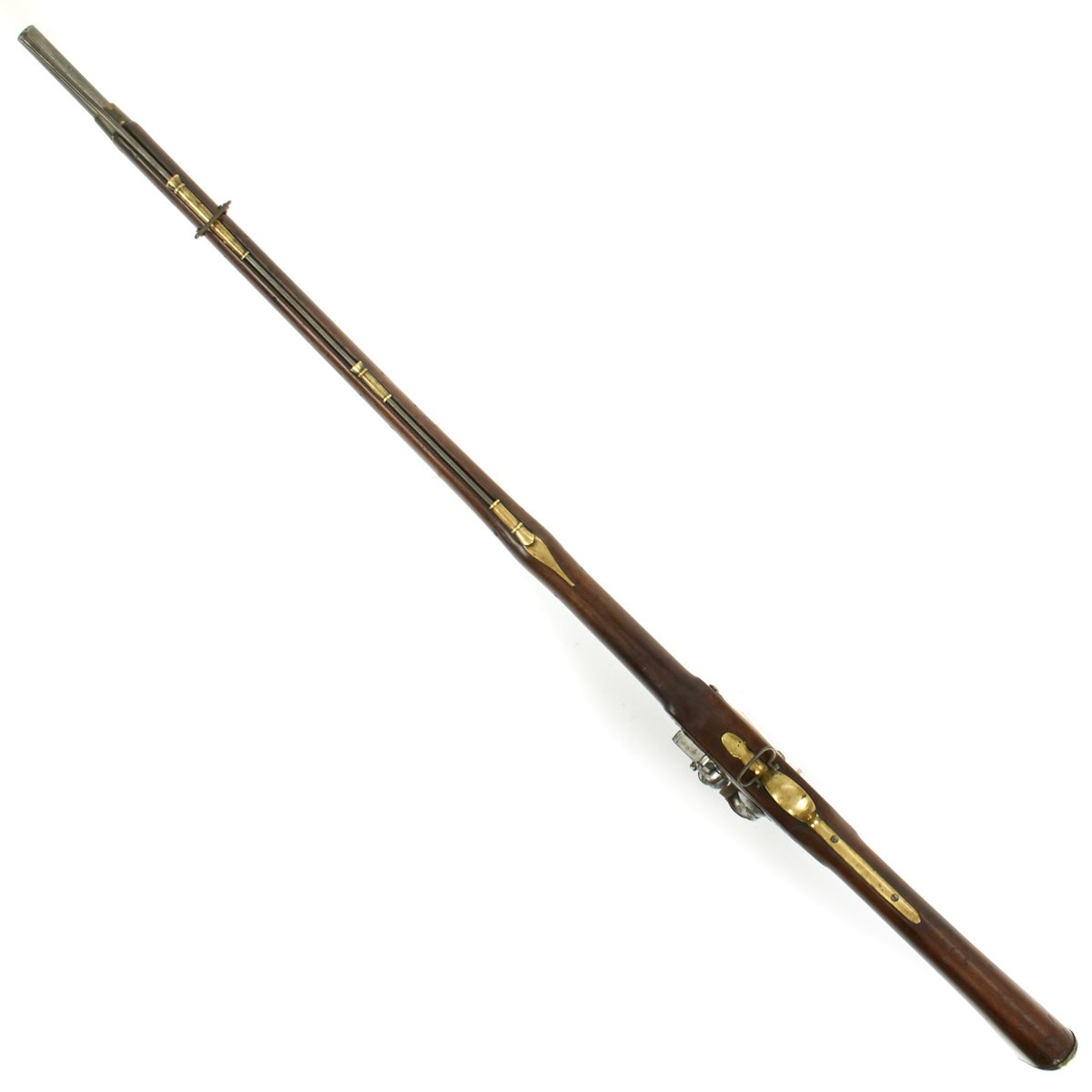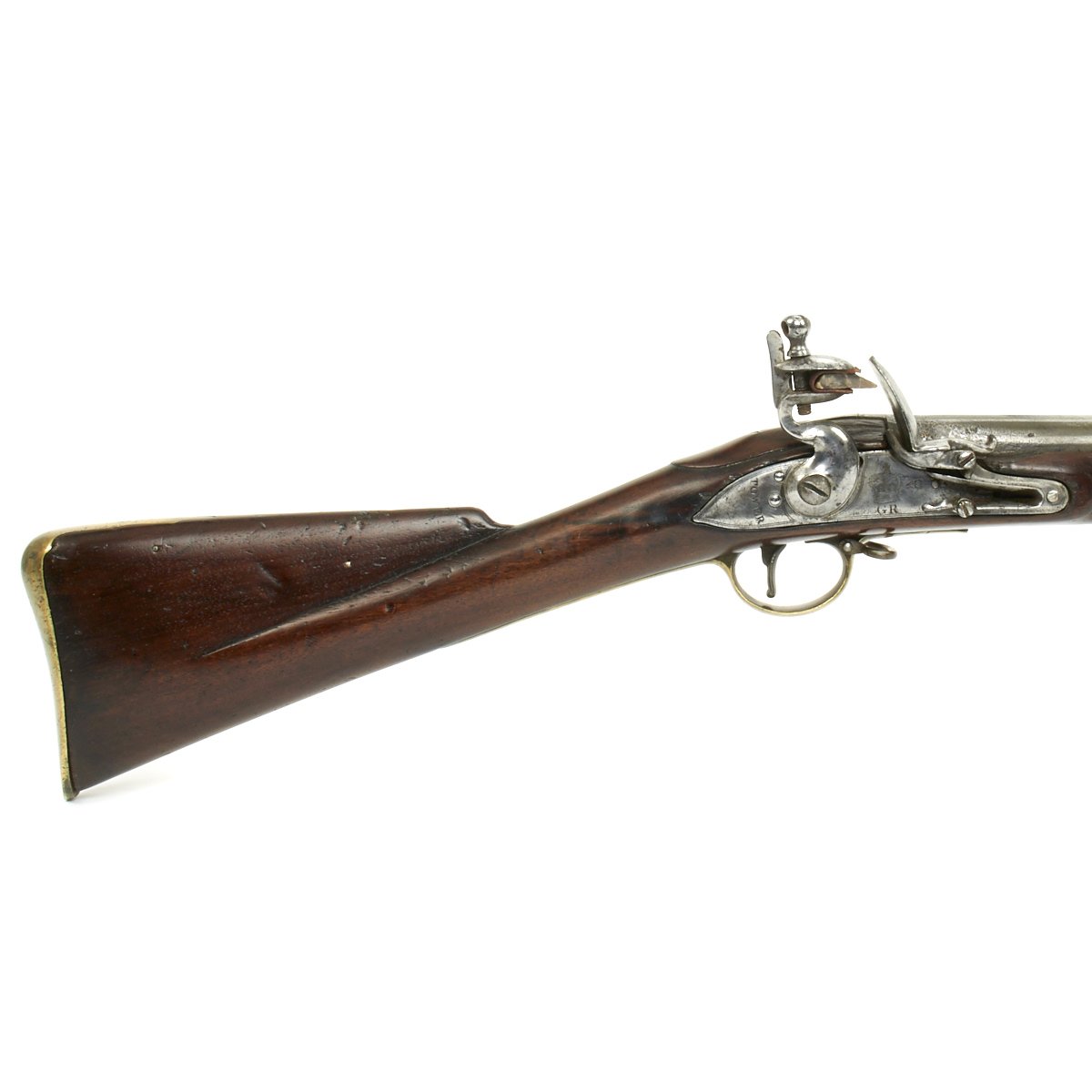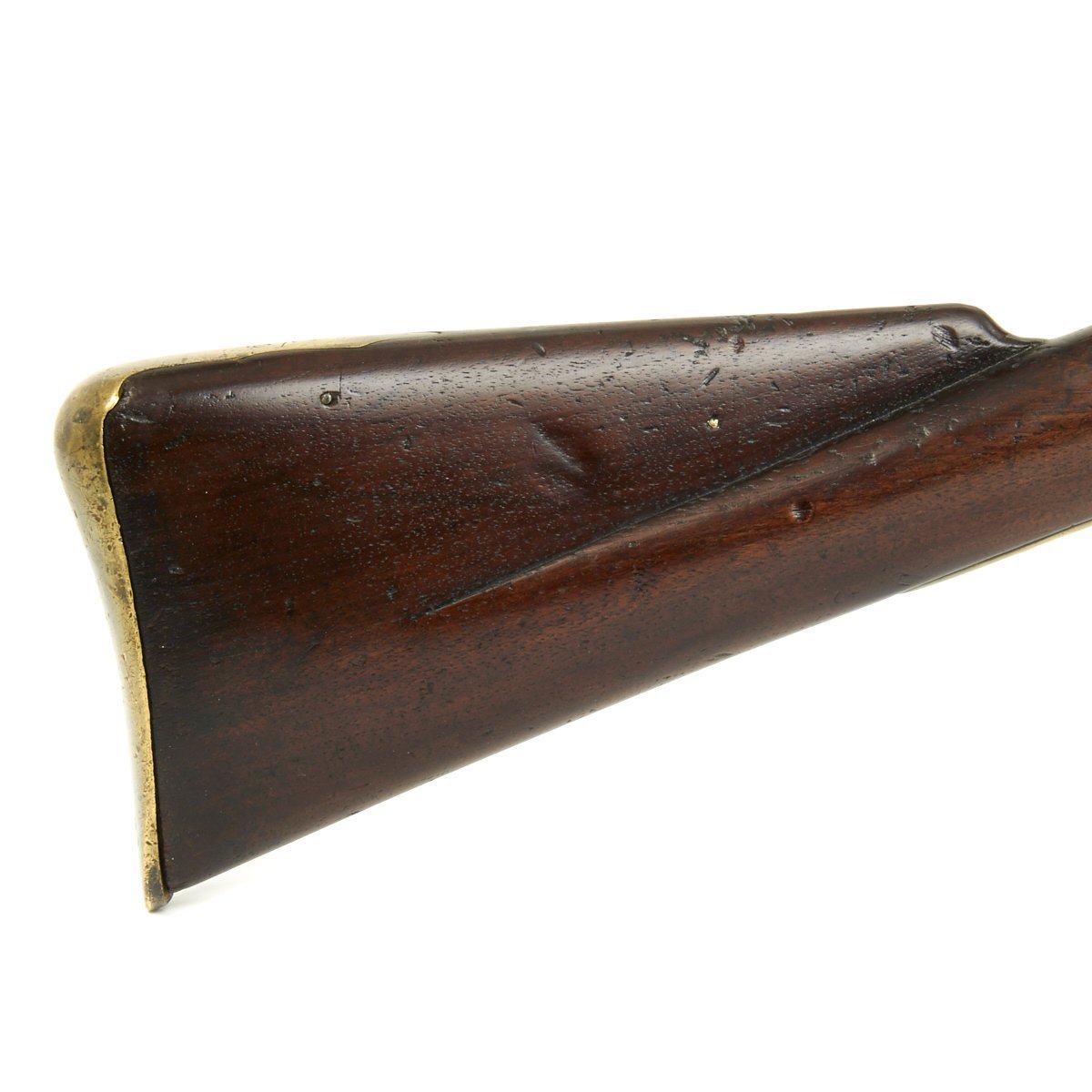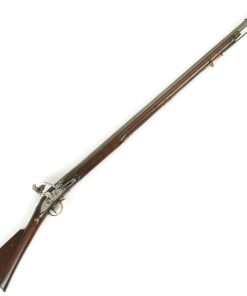Original British Third Model Brown Bess Flintlock Musket Marked to the 32nd Regiment of Foot Original Items
$ 2.995,00 $ 748,75
Original Item: Only One available. This is a beautiful example of the British THIRD MODEL Brown Bess musket, commonly referred to a the India Pattern because it was a virtual copy of the British East India Company’s 1771 Windus Flintlock musket that used a 39″ barrel. The War with Revolutionary France that led to the 20 years of War with Napoleon Bonaparte forced Britain to update its armaments for fear of Invasion. The third pattern Brown Bess had a shorter than previously (42″) barrel of 39″, it had a full walnut stock, brass mounts using only THREE ram rod pipes. It became the work horse of the coming British Empire.
Our example is in just splendid condition having been fully maintained in a Museum Display for probably more that fifty years in the United Kingdom. Correct in every respect this model was used in the U.S. War of 1812 and famously at the Battle of Waterloo in 1815 which finally routed Napoleon Bonaparte.
This example is marked with a CROWN over G.R. and TOWER across the tail of the lock together with a crisp Inspector’s V (viewed) stamp. The butt plate is marked C / 19 as a rack or unit number, and the 39″ barrel is marked 32nd REGt for the 32nd (Cornwall) Regiment of Foot.
The regiment was first raised by Colonel Edward Fox as Edward Fox’s Regiment of Marines in 1702 to fight in the War of Spanish Succession. After the war it was disbanded in 1713 but re-raised as Jacob Borr’s Regiment of Foot in 1714. It then served in Ireland from 1716 to 1734. It served in the war of Austrian succession, and On 1 July 1751 a royal warrant was issued declaring that in future regiments were no longer to be known by their colonel’s name, but by the “Number or Rank of the Regiment”. Accordingly, General Francis Leighton’s Regiment was renamed as the 32nd Regiment of Foot. Then in 1782 all regiments of the line without a royal title were given a county designation and the regiment became the 32nd (Cornwall) Regiment of Foot.
The regiment then fought throughout the Napoleonic wars, often under Sir Arthur Wellesley, the Duke of Wellington. At the Battle of Waterloo the regiment was stationed opposite the French main attacks, standing their ground before attacking Napoleon’s assaulting troops. They were commanded in the action by two Majors, JOHN HICKS and FELIX CALVERT. The regiment took very severe casualties in the battle, including Lieutenant-General Thomas Picton.
A thing of beauty, very easy on the eye, ready to display.
Specifications:
Years of Manufacture: Circa 1790-1800
Caliber: .75″ Musket
Ammunition Type: Lead Ball & Powder
Barrel Length: 39 inches
Overall Length: 55.5 inches
Action: Flintlock
Feed System: Muzzle-Loaded
NOTE: International orders of antique firearms MUST be shipped using UPS WW Services (courier). USPS Priority Mail international will not accept these.
Fast Shipping with Professional Packaging
Thanks to our longstanding association with UPS FedEx DHL, and other major international carriers, we are able to provide a range of shipping options. Our warehouse staff is expertly trained and will wrap your products according to our exact and precise specifications. Prior to shipping, your goods will be thoroughly examined and securely secured. We ship to thousands clients each day across multiple countries. This shows how we're dedicated to be the largest retailer on the internet. Warehouses and distribution centres can be located throughout Europe as well as the USA.
Note: Orders with more than one item will be assigned a processing date depending on the item.
Before shipping before shipping, we'll conduct a thorough inspection of the items you have ordered. Today, the majority of orders will be delivered within 48 hours. The delivery time will be between 3-7 days.
Returns
The stock is dynamic and we cannot completely manage it because multiple stakeholders are involved, including our factory and warehouse. So the actual stock may alter at any time. It's possible that you may not receive your order once the order has been made.
Our policy is valid for a period of 30 days. If you don't receive the product within 30 days, we are not able to issue a refund or an exchange.
You can only return an item if it is unused and in the same state as the day you received it. You must have the item in its original packaging.
Related products
Uncategorized
Uncategorized
Uncategorized
Uncategorized
Uncategorized
Armored Burgonet Helmet & Polearm from Scottish Castle Leith Hall Circa 1700 Original Items
Uncategorized
Uncategorized
Uncategorized
Uncategorized
Uncategorized
Band of Brothers ORIGINAL GERMAN WWII Le. F.H. 18 10.5cm ARTILLERY PIECE Original Items
Uncategorized
Armoured Fighting Vehicles of the World: AFVs of World War One (Hardcover Book) New Made Items
Uncategorized
Uncategorized
Uncategorized
Uncategorized
Uncategorized
Uncategorized
Uncategorized
Angolan Rebel 1970s era 60mm Inert Display Mortar from Angolan Civil War Original Items
